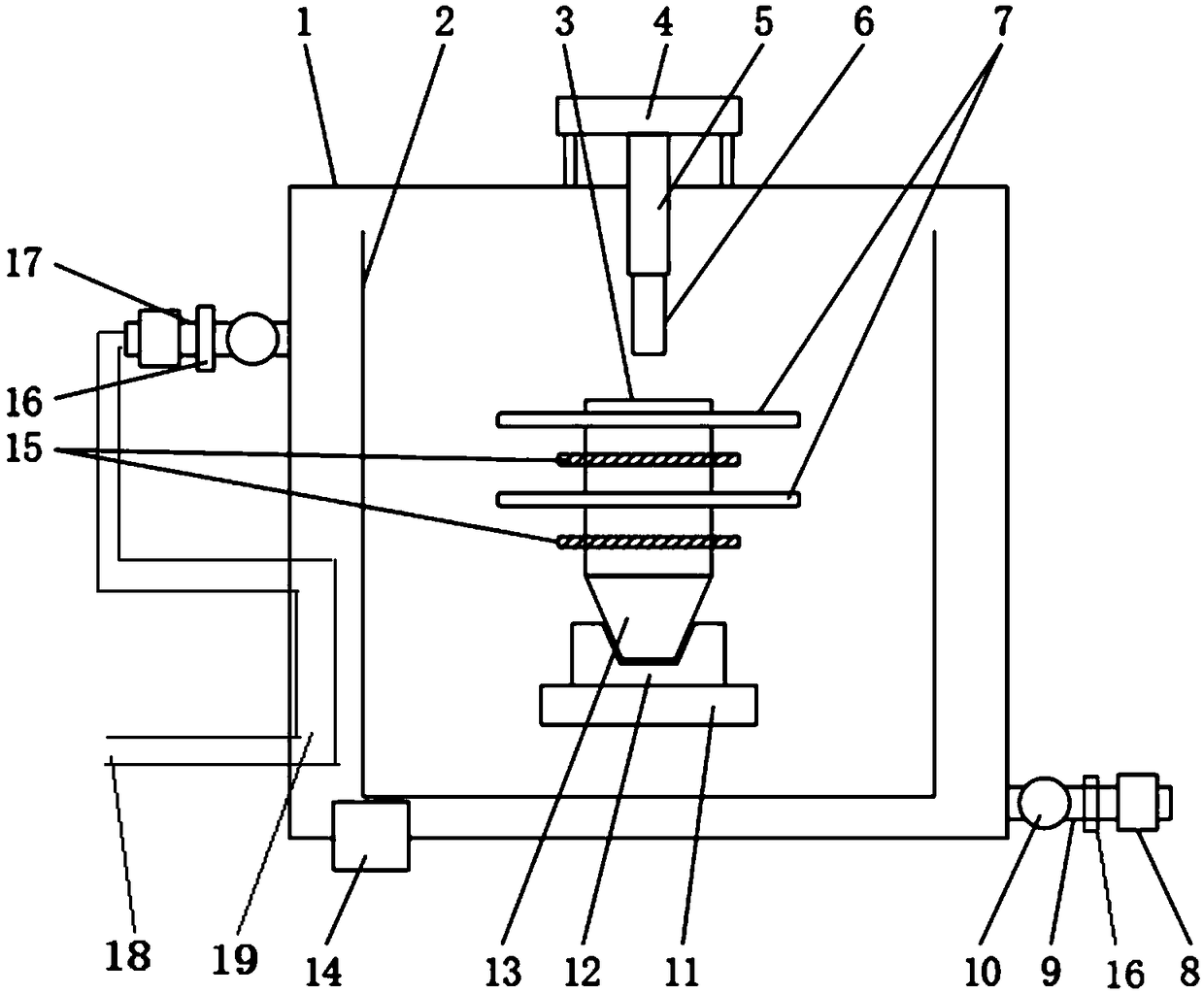Device and method for growing silicon carbide crystals by aid of electric resistance processes
A resistance method, silicon carbide technology, applied in chemical instruments and methods, the seed crystal remains in the melt during growth, the growth of single crystals, etc., can solve the problem of inability to achieve uniform temperature reduction, save devices and costs, heating Small area effect
- Summary
- Abstract
- Description
- Claims
- Application Information
AI Technical Summary
Problems solved by technology
Method used
Image
Examples
Embodiment 1
[0018] see figure 1, the present invention provides a technical solution: a device for growing silicon carbide crystals by the Kyropoulos resistance method, the device comprising: a growth furnace body 1, a heat preservation cover 2, a crucible 3, an electric pulling device 4, a shaft sleeve 5, a seed Crystal rod 6, heating device 7, flow control device 8, outlet pipe 9, barometer 10, base 11, crucible holder 12, seed crystal tank 13, vacuum system 14, temperature measuring thermocouple 15, thermometer 16 and inlet pipe 17. It is characterized in that: a base 11 is welded under the interior of the growth furnace body 1, and the upper part of the base 11 is connected with a crucible holder 12, and a crucible 3 is fitted above the crucible holder 12, and a seed crystal is placed above the crucible 3 rod 6, and the top of the seed rod 6 is connected to the electric pulling device 4 through the shaft sleeve 5, the bottom of the crucible 3 is provided with a seed crystal groove 13,...
Embodiment 2
[0021] A method for growing silicon carbide crystals by the Kyropoulos resistance method, which has been implemented according to the aforementioned device for growing silicon carbide crystals by the Kyropoulos resistance method, is characterized in that it includes the following steps.
[0022] 1) Heating test run steps: seal the device, pump it to 0.9-0.95 atmospheric pressure with a vacuum system 14, heat the heating device 7 until the internal temperature of the device reaches 1900°C, restore the internal pressure to standard atmospheric pressure, and reduce the pressure linearly through the sliding rheostat , lower the heating power of the heating device at a straight-line descending speed, and at the same time use 0.2-0.4m 3 At a speed of / min, the air is discharged from the outlet pipe and the air is taken in from the external air inlet at the same time to reduce the internal temperature of the device to above 50°C. During this process, monitor the operation of each comp...
Embodiment 3
[0027] Alternatively, as in the method of Example 2, in the step (1), use a vacuum system (14) to pump to 0.9-0.95 atmospheric pressure, and at the same time at a speed of 0.2-0.4m3 / min from the air outlet pipe and intake air from the intake pipe; in the step (4), the temperature A°C when the record crystal reaches a predetermined height by actual measurement, in the aforementioned step (2), the constant rate cooling from 1900°C to 50°C is used as a reference point It is the high temperature section B and the low temperature section C of the two constant-speed cooling stages with different slopes, and the slope of the low temperature section C is steeper than that of the high temperature section B. The cooling process is simulated in two stages, and in step (3), the adaptation to the high temperature section B is obtained. and the determined power curve and the determined flow change curve of the two stages of the low temperature section C, and in step (4), the temperature is l...
PUM
 Login to View More
Login to View More Abstract
Description
Claims
Application Information
 Login to View More
Login to View More - R&D
- Intellectual Property
- Life Sciences
- Materials
- Tech Scout
- Unparalleled Data Quality
- Higher Quality Content
- 60% Fewer Hallucinations
Browse by: Latest US Patents, China's latest patents, Technical Efficacy Thesaurus, Application Domain, Technology Topic, Popular Technical Reports.
© 2025 PatSnap. All rights reserved.Legal|Privacy policy|Modern Slavery Act Transparency Statement|Sitemap|About US| Contact US: help@patsnap.com

